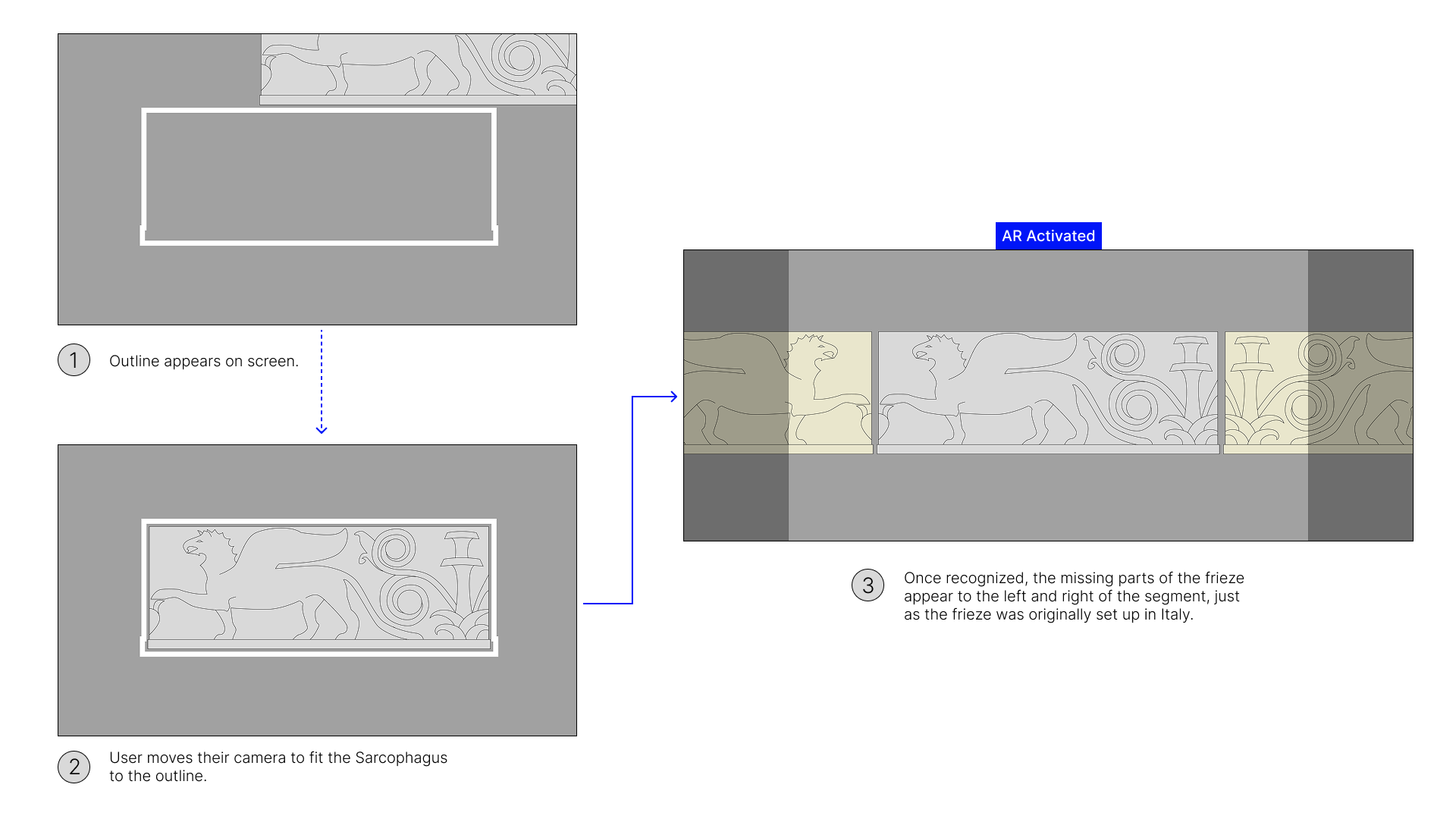Robinson Hall Atlas AR
Target Platform | Mobile App
DEV TOOL | UNITY
I made Robinson Hall Atlas during my master’s study at Harvard. Architectural historian Joseph Connors served as the subject matter expert.
The mobile app guides visitors through Robinson Hall and tells the unseen stories of its objects through interactive augmented reality overlays.
Though not publicly released, the project was a meaningful exploration of how AR can make remote cultural storytelling more immersive.
MY ROLE
visual design
UI/UX design
3D Artist
Prototyper
CollaboratorS
Prof. Joseph Connors
Yael Saiger
Tech Advisor
Prof. Takehiko Nagakura
The Mobile App





[Final Wireframes]
[Mobile App User Flow]
I set up a simple user flow that highlighted three artifacts at Robinson Hall.
Each artifact has an in-depth info page, which leads to it’s own AR experience.
AR Experiences
The Sarcophagus
The Sarcophagus of Scipio Barbatus
This sarcophagus replica stand beside the main entrance of Robinson Hall.
What was clearly missing on this replica was the inscriptions about its owner. So we brought it back with AR. Furthermore, we added a translate function so that visitors could actually parse the inscriptions and understand the story behind it.
Early demo of AR feature
Frieze Segment
Frieze Segment from the Temple of Antoninus and Faustina
This rectangular griffin motif replica hangs on the main facade of Robinson Hall. It’s hard to tell by the way that it is set up, but originally it was a part of a longer frieze, at the roof of a building in Italy.
We brought back the bigger picture by adding in the missing pieces.
The Balcony
The Balcony of Cancelleria Palace
This balcony replica hangs on a wall in the lobby of Robinson Hall.
First, we brought in the walls of the building that the original is from — Cancelleria Palace — to return its sense of place.
Then we added in interactable areas on the balcony to tell the histories intertwined with it and it’s design elements.





